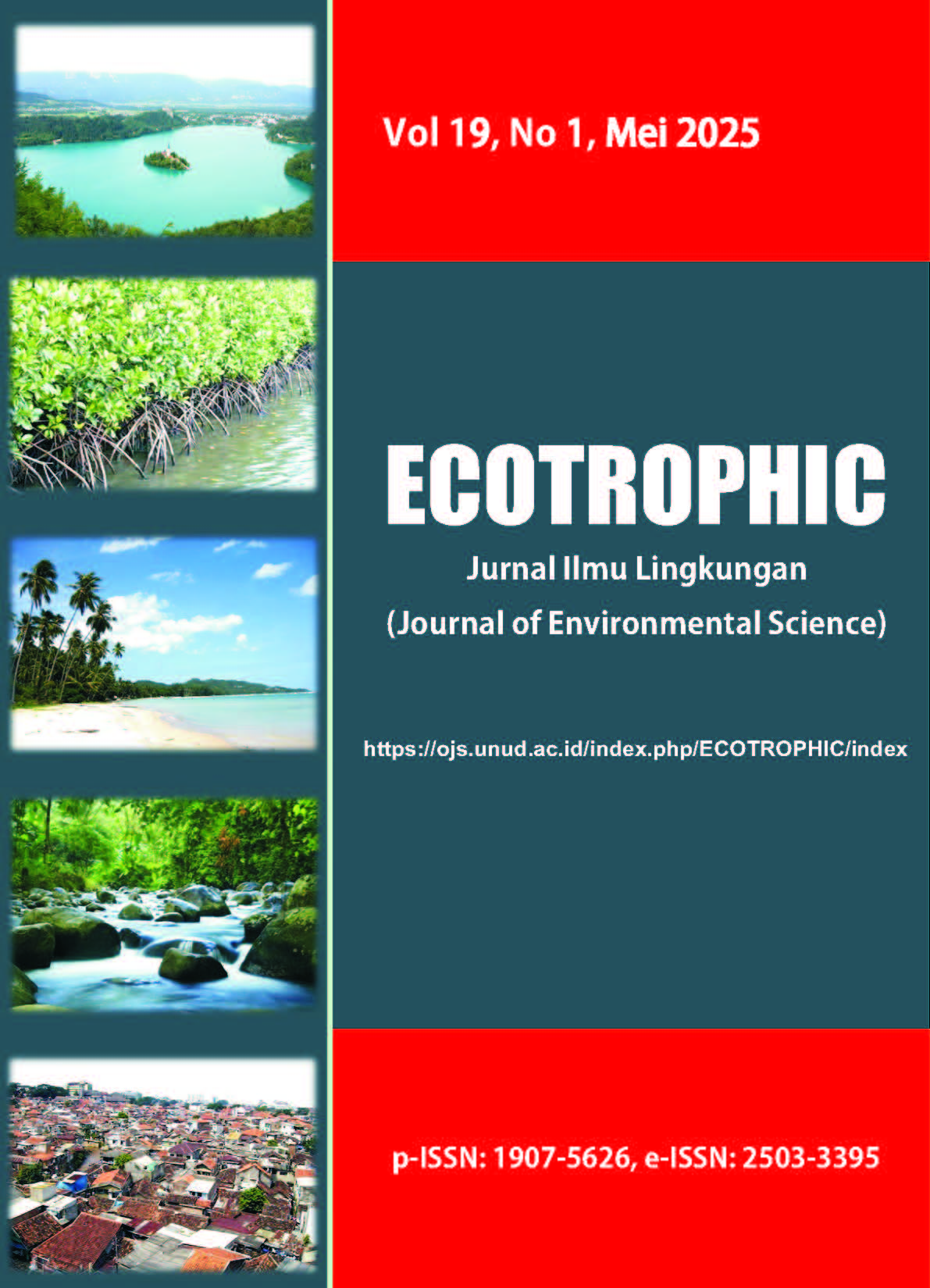FITOREMEDIASI PADA LIMBAH LAUNDRY MENGGUNAKAN TANAMAN BAMBU AIR (Equisetum hyemale) DENGAN SISTEM HIDROPONIK
DOI:
https://doi.org/10.24843/EJES.2025.v19.i01.p08Keywords:
COD, Phosphate, Plant SpacingAbstract
The laundry industry has grown rapidly, leading to an increase in waste production. Waste management can be achieved through water-bamboo phytoremediation. The purpose of this study was to analyze the effect of filtration time, to evaluate the effect of plant spacing, to analyze the effect of treatment on the amount of pollutant, and to analyze the effect of different treatment combinations on reducing surfactant, COD, pH, and phosphate levels. This research uses a hydroponic system with several variations in treatment, such as variations in plant spacing, variations in waste levels, and variations in contact time. This research found that contact time affects pollutant absorption. At closer plant spacings, water bamboo has a better ability to absorb waste. Plants' ability to absorb pollutants was better with less waste. The best absorption capacity was obtained from a combination of 10 cm plant spacing and 10% waste. Retention time influences the reduction in surfactant, COD, pH, and phosphate levels, with day three being the best contact time. Plant spacing affects reducing surfactant, COD, pH, and phosphate levels. A plant spacing of 10 cm is best. Differences in concentration affect the parameter values of surfactant, COD, pH levels, and phosphate; laundry waste concentration of 10% is the highest removal efficiency. Different treatment combinations affected reducing surfactant, COD, pH, and phosphate levels; the treatment combination of 10% waste concentration and 10 cm plant spacing was the best.

